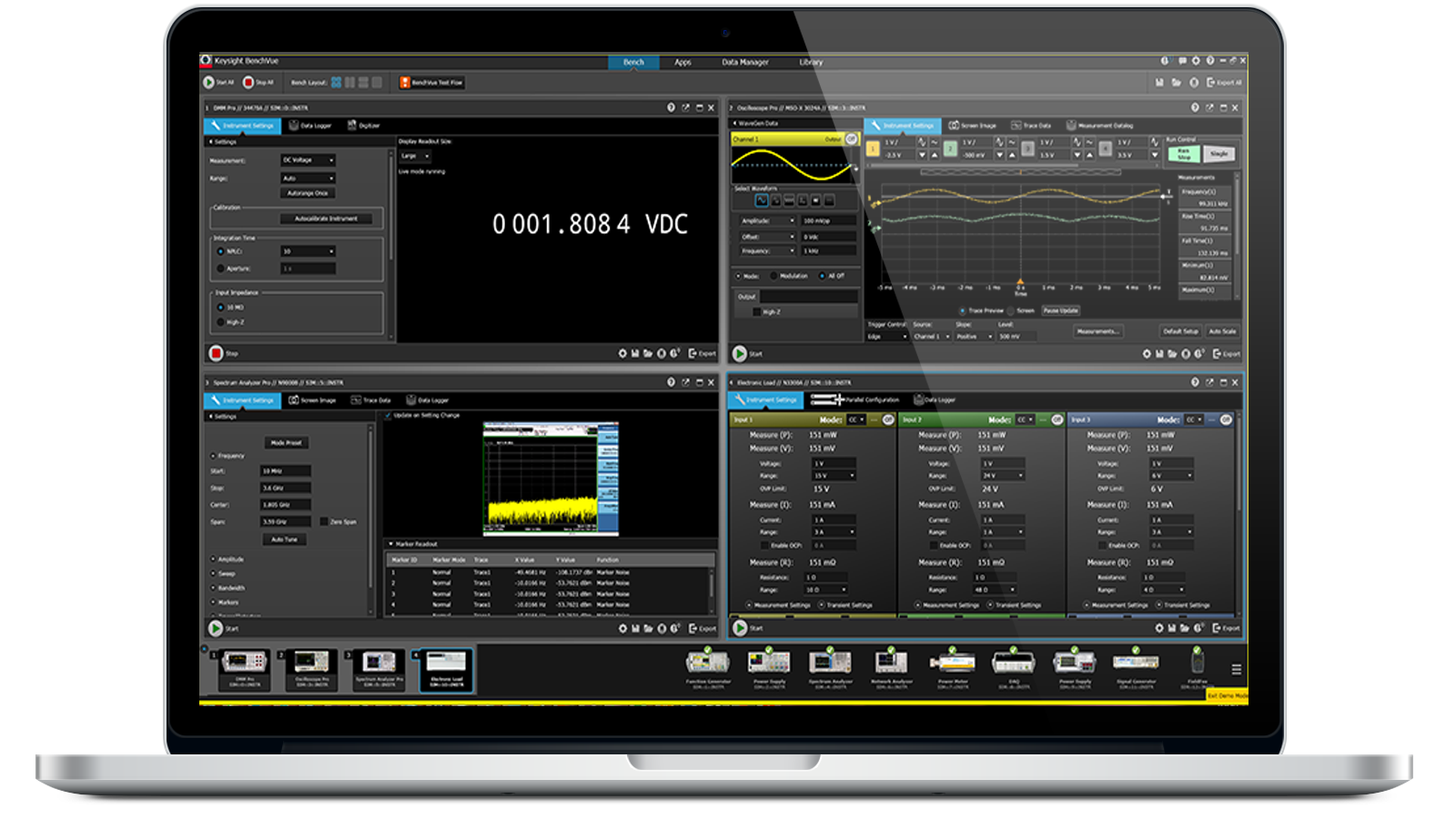What are you looking for?
Instrument Workflow Software
Accelerate testing workflows with data analysis, lab operations, and test automation tools
Automate Test Workflows and Lab Operations
Connect instruments, test stations, and project teams to a single source of test data. Automate complex testing workflows, measurement correlation, and resource management to optimize operations from the test lab to the factory floor.
Explore Instrument Workflow Software
Streamline Testing Workflows with Test Automation
Test automation delivers significant cost- and time-saving benefits over traditional test automation and analysis tools. With Keysight PathWave Test Automation, your team has all the tools it needs to meet even the most aggressive product release schedules.
Learn about the issues associated with homegrown test software and how modern, commercially available test software environments can help you accelerate testing workflows and time-to-market.
What Can You Do with Instrument Workflow Software?
Connect, Correlate, and Collaborate Anywhere
Test workflows should revolve around design, simulation, and validation. You should not have to waste precious time managing separate instruments, correlating measurements, and building complex test plans. Connect your instrument measurement data to the cloud, automatically correlate data between test instruments and test teams, and collaborate easily across the lab and around the world — all while eliminating human errors along the way.

Get a 360-Degree View of Your Lab and Test Workflows
Get deeper insight into the inner workings of your lab. Consolidate every lab function into a single pane of glass — from test ordering and execution to resource tracking, data analysis and storage to report generation. Whether individual teams test independently or rely on a centralized group that provides test as a service (TaaS), Keysight helps you establish and manage a connected, automated, and efficient workflow.

Optimize Manufacturing Workflows with Big Data
Big data can help improve yields, minimize rework and retesting, and improve product quality. Conduct cross-organizational root-cause analysis, detect outliers automatically, and cut through the clutter with predictive insights. Make critical course corrections without sifting through dashboards, spreadsheets, and endless streams of raw data with extensive drilldowns, custom alerts, and curated, no-code visualizations.

Protect Your Innovation Investment
Learn More About Instrument Workflow Software
Frequently Asked Questions About Instrument Workflow Software
Design and test collaboration tools primarily focus on an engineer's bench top and span instrument control, data acquisition and analysis, and test automation software. These tools improve efficiency and collaboration by correlating data, consolidating and visualizing measurements, and orchestrating and sequencing tests.
True to their name, lab management tools help lab managers and directors manage test teams and organizations. Lab managers often rely on multiple tools to maintain efficient, lab-wide workflows — but asset and resource management is a challenge. By comparison, lab management tools consolidate these disparate tools into a single pane of glass — providing a comprehensive view of assets, activities, and analysis.
These tools help lab managers create and manage test plans — spanning data collection, processing, storage, and retrieval. Asset and resource management applications ensure connected, process-driven workflows that help teams achieve maximum efficiency. Additionally, lab managers can use the tools' data analytics to optimize equipment purchases, enhance test results, and ensure product quality to increase production, quality, and test assurance across the lab.
Operations management tools combine test and measurement metrics with big data analytics. While there are many big data analytics platforms and asset monitoring tools, operations management tools harness the hidden value in granular test data to acquire, transform, and analyze that data to improve the output of design, test, and manufacturing teams.
Instead of prioritizing maintenance upgrades or process improvements, operations management tools focus their data synthesis and analysis functions on output, upon which a company's reputation rises or falls.
Want help or have questions?




















